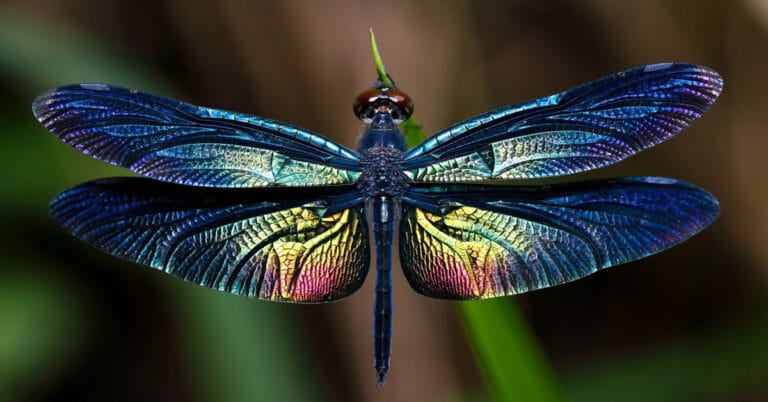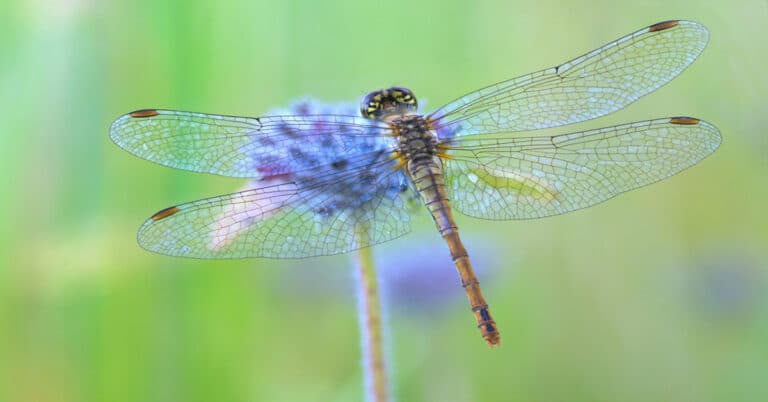Green Darner Dragonfly
Scientific Classification
| Kingdom: | Animalia |
| Phylum: | Arthropoda |
| Class: | Insecta |
| Order: | Odonata |
| Suborder: | Anisoptera |
| Family: | Aeshnidae |
| Genus: | Anax |
| Species: | A. Junius |
| Binomial name: | Anax Junius |
The Common Green Darner, biologically known as Anax Junius is a dragonfly species that resembles a darning needle. It belongs to the Aeshnidae family. In North America, this species is one of the most commonly found creatures, and its range extends to the south of Panama. Like the Monarch Butterflies, these dragonflies are also well-known for their iconic nature of migration from the North United States to humid climate regions like Mexico and Texas. It is also found in the Tahiti, the Caribbean, and in Asia extending from Japan to China. In the United States, the Green Darner dragonflies are the official insect of Washington state.

Description
The North America’s most common dragonfly, the common Green Darner dragonfly is a big insect that grows about 6.8 to 8.4 cm in length. The wingspan of this creature is around 9 to 11.4 cm, and the length of the hind wing is about 4.5 to 5.6 cm. This dragonfly is seen with a dark green shaded thorax and head, and a completely contrasting blue shaded abdomen. In immature as well as female Darner, the abdomen is found to be pale green, brown or reddish in color. In all the species, irrespective of male, female or immature, the upper part of the abdomen is seen with a unique dark line. The abdomen of this species is long and narrow resembling a darning needle, from where it acquired its name.
The face of the Common Green Darner is yellowish-green with dark and large green eyes that are seen on the top part of the head. A brown or black spot inside a yellow and blue ring is found on the forehead of the darner dragonflies, which is referred as a “bull’s-eye” mark. The Darner’s wings are clear, although most of the times it turns to a shade of amber as they mature, especially in female dragonflies. The legs of this creature are mostly black or brown in shade. This dragonfly may turn dark purple to grayish in hue during the cold climate, which allows them to absorb the sunlight and heat from the sun.
The Common Green Darner in the larva form is smooth and long, which can be usually seen with brown and green marks. The larvae, also known as nymphs are aquatic in nature and undergo many stages of development that takes a long period of time, to molt and emerge as an adult Darner Dragonfly.

Breeding

The breeding pattern of the Common Green Darner is very unusual, as they are one of the few dragonflies carrying out the process of migration during the autumn and spring. Some individual dragonflies behave differently by overwintering as a larva before developing as mature dragonflies in the season of spring, whereas most of the dragonflies migrate towards south in the period of autumn, and possibly fly in large swarms. In the winter, these migrating dragonflies are believed to breed in the southern parts of the United States, Mexico and in the Caribbean regions, which eventually produces larvae, the new generation of mature Darner dragonflies that migrate again to the northern parts to breed during the summer climate there. The larvae produced in the summer in the northern parts again continue to migrate towards the south as immature dragonflies, to breed.
The adult male Green Darner dragonfly roams over the stretches of water to chase the intruders, as well as to follow any potential mates. Their sex involves a very unusual step of transferring sperm from the sperm producing genitals to the segments located underneath the abdomen. This portion includes a penis and a sperm reservoir. This process is very unique in Odonate creatures. After the male finds a suitable female, he holds the female with his claspers on the backside of her head, and the female Darner holds the male near his abdomen with her middle pair of legs. In this position, they can fly for a long time in the air. After the process, when the female is ready to release the eggs, the male leaves the female near the water. The female Darner often lays eggs on the vegetation present in the water, whereas the male stands guard over the female, as well as the eggs, so that no other male dragonfly approaches her for mating.
Food
Like other species of dragonflies, the Common Green Darner dragonfly is a voracious and agile predator. Their vision plays an important role in preying on food, as well as escaping from its predators. The adult Darners feed during the dusk or in the day time, and often roam over the rivers, fields or lakes in swarms, where the food is available in abundance. They munch on a variety of insects, including other dragonflies, butterflies and other flying insects like mosquitoes, ant royalty, flies and moths. The larvae of Green Darner are also carnivorous in nature, but mostly feed on aquatic insects like tadpoles, small fish, mosquito larvae and other insects. The larva catches the prey with the help of its lower jaw, termed as ‘labium’, which consists of hooks that trap the victims.
Range

The Common Green Darner dragonfly is widely spread across the regions in the North America including Canada and Alaska. It also occurs in Central and South America, including Mexico and other regions like the Caribbean, Bermuda, Bahamas, Cuba, Jamaica, the British Virgin Island, the Dominican Republic, the Cayman Islands, Haiti and Puerto Rico.
The other site outside the usual range of this Dragonfly, where you can find enough of their population is Hawaii, France, the United Kingdom and northeastern parts of Asia.
Habitat
A migratory dragonfly species, the Common Green Darner can be seen in a distinct variety of habitats, while migrating. They can be seen both, near as well as far away from the water bodies. But for the breeding purpose, they are normally found near the still water habitats like ponds, swamps, marshes, lakes estuaries and slow-moving streams.
Threats
Till now, the common Green Darner is known as an abundant and widespread species. It has a great population, especially in North America, and is known to survive against any possible major threats. But recent studies reveal that, like the other dragonfly species, the Green Darner dragonflies can also be at risk in various areas because of the degradation and destruction of wetland habitats as well as from the heavy pollution.
Conservation
This beautiful and colorful species of dragonfly are not considered as a threatened species till now, but the degradation of land, water and air may cause some threat to its life. No conservation measures have been considered till now to protect this species, but in future, if a need arises then, cross-border cooperation and measures will be required due to their migration habit.

Having discovered a fondness for insects while pursuing her degree in Biology, Randi Jones was quite bugged to know that people usually dismissed these little creatures as “creepy-crawlies”.







